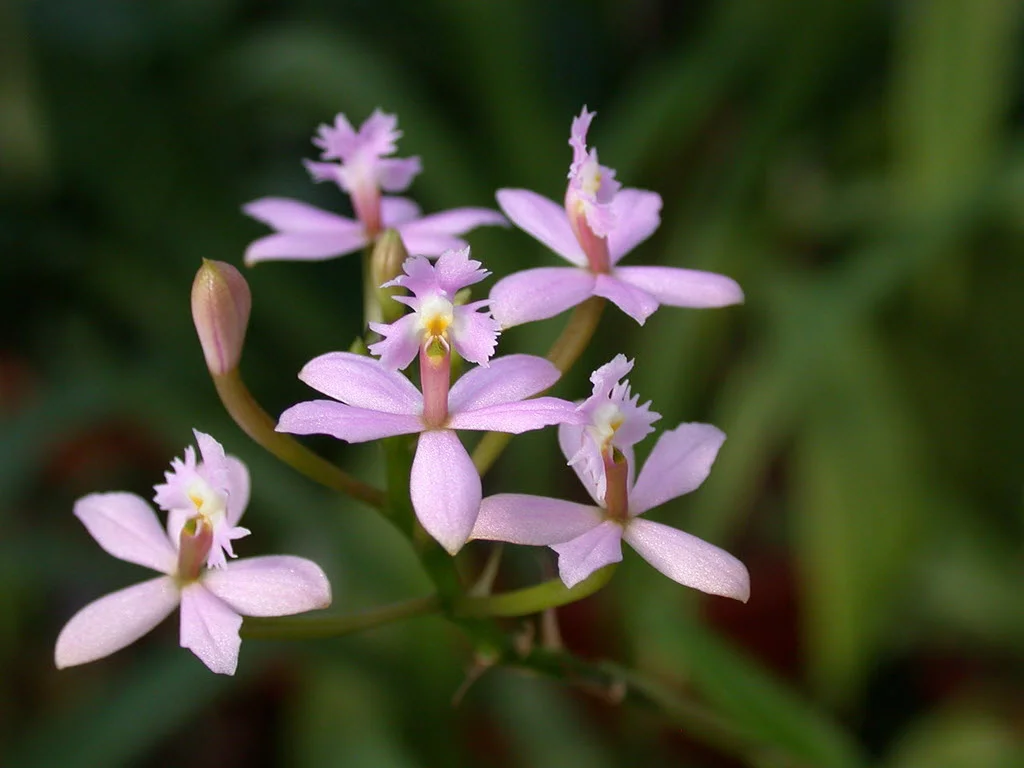Table of Contents
Pronunciation: bar-KER-ee-ah
Introduction
In 1838, an Englishman named George Barker imported the Barkeria orchid and flowered it from its native Mexico. This genus is made up of epiphytic plants that naturally grow on rocks, shrubs, and trees.
It's a very forgiving orchid genus that does well even if slightly neglected.
Barkeria Melanocaulon
This orchid's stems have sheath-covered slender pseudobulbs and very thin leaves. The flowers are very bright purple, and they grow in clusters that look very attractive when they hang down from their mounted positions.
They do not do well in traditional containers, and they like their roots to be bare and open to the air.
Temperature
As this orchid genus hails from Mexico, they like warmer temperatures to thrive. They do very well with intermediate temperatures, but they aren't strict on the temperature ranges.
During the daytime, optimal temperatures range from 80°F to 85°F (26°C to 29°C). In the nighttime hours, they prefer temperatures that go no lower than 65°F (18°C).
Once your plant goes dormant, they can tolerate slightly lower day and nighttime temperatures.
During the day, temperatures can range from 70°F to 75°F (21°C to 23°C), and nighttime temperatures can reach 56°F to 59°F (13°C to 15°C).
Light
Although this genus likes a lot of bright light, try to diffuse it and avoid direct sunlight. Additionally, your orchid should have good ventilation and air movement constantly.
If you're growing it indoors, place them in a bright eastern facing window or a slightly shaded south window if you live in the northern hemisphere.
Water and Humidity
Water your Barkeria orchid heavily once a day during the summer and early autumn months to stimulate its growth. You may have to water more than once a day if the temperatures and humidity levels go extremely high. However, the plant's roots should dry out completely between watering to prevent root rot.
From September to March, your plant may enter a dormant period where it loses its leaves and looks like dry, hanging, sticks. This is normal, and you should reduce your watering to light mists every few days until it begins to grow again.
The average humidity in their natural habitats ranges from 70% to 80% year-round, and this is one area where this orchid genus is picky. While they can survive with slightly lower humidity levels, keep it as close to this range as you possibly can to ensure optimal growth.
Feeding
Feed your plant a balanced fertilizer mix that is diluted to half strength once a week during the periods of active growth in the summer and into the early autumn months. During the late summer, switch your fertilizer to one that has lower nitrogen levels and higher phosphorus levels because it can promote better flowers in the spring.
When your plant goes dormant, stop fertilizing it until you see new growth starting once again.
Potting
Ideally, mount your orchid on a slab of bark, tree fern, or cork. If you can't do this, grow it in shallow pots or wire baskets.
They can do very well if you add larger pieces of tree-fern or a very coarse medium, even if they traditionally won't tolerate growing in pots very well. They're known for being able to adapt to these growing conditions.
Video
Brad of Brad's Greenhouse shows off his beautiful Barkeria orchid. He shares this species quirks and habits — great practical tips for those who are interested in Barkerias.
If you want to find more hardy orchid varieties, check out our comprehensive list of the different types of orchids.











